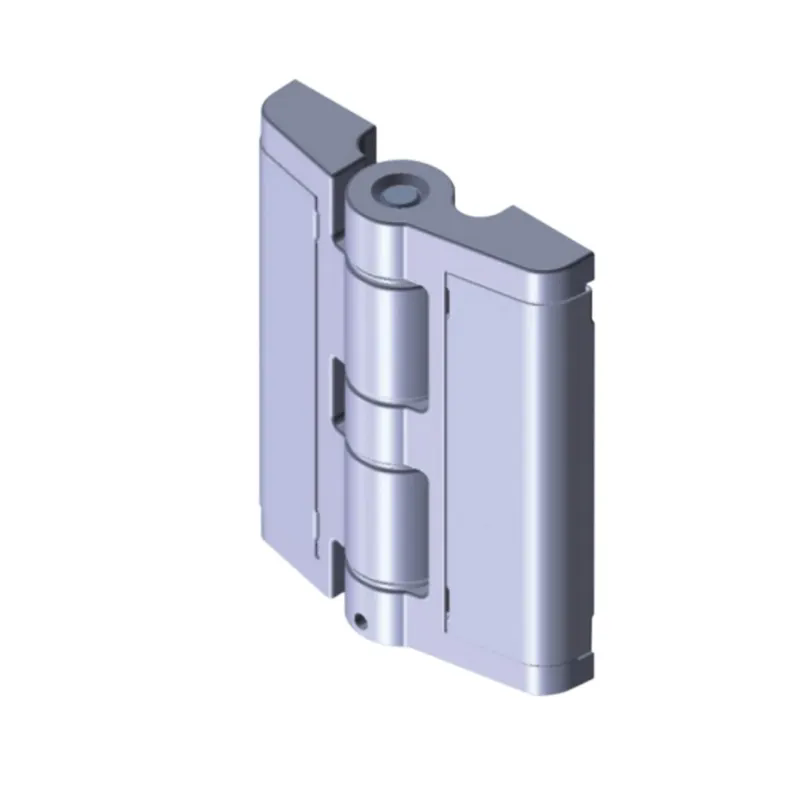Understanding Protective Covers for Heavy Butt Hinges: Why They Matter and How to Choose
2024-09-13
When it comes to heavy-duty doors and industrial applications, the importance of hinges cannot be overstated. Heavy butt hinges, known for their strength and durability, are commonly used in situations where robust support and reliable operation are critical. However, to ensure the longevity and optimal performance of these hinges, protective covers play a crucial role. In this blog, we will explore the significance of protective covers for heavy butt hinges, their benefits, and how to select the right cover for your needs.
What is a Heavy Butt Hinge?
A heavy butt hinge is a type of hinge designed to support substantial weight and stress. Unlike standard hinges, heavy butt hinges are typically larger and more robust, featuring thicker plates and stronger pin mechanisms. They are commonly used in industrial doors, commercial buildings, and large-scale applications where extra strength and durability are required.
The Role of Protective Covers
Protective covers for heavy butt hinges are designed to shield these critical components from various environmental factors and operational stresses. Here’s why they are essential:
1. Prevent Corrosion and Rust: Heavy butt hinges are often exposed to moisture, chemicals, and other corrosive elements. Protective covers help prevent rust and corrosion, extending the life of the hinges and maintaining their functionality.
2. Minimize Wear and Tear: Regular use and exposure to external elements can lead to wear and tear on hinges. Protective covers reduce friction and protect the hinge surfaces from abrasions, ensuring smooth operation and reducing maintenance needs.
3. Enhance Aesthetics: Protective covers can enhance the appearance of heavy butt hinges by providing a finished look and concealing any unsightly components. This is particularly important in applications where aesthetics are a concern.
4. Improve Safety: By covering sharp edges and protruding parts, protective covers reduce the risk of accidents and injuries. They provide a safer environment, particularly in high-traffic areas.
5. Increase Longevity: By shielding the hinge from environmental damage and physical stress, protective covers contribute to the overall longevity of the hinge, reducing the frequency of replacements and repairs.
Types of Protective Covers for Heavy Butt Hinges
1. Plastic Covers: Plastic protective covers are lightweight and often used for indoor applications. They are easy to install and remove and provide basic protection against dust and minor impacts.
2. Rubber Gaskets: Rubber gaskets offer excellent cushioning and protection against vibrations and impacts. They are ideal for applications where the hinge is exposed to constant movement and stress.
3. Metal Covers: Metal protective covers are durable and provide robust protection against environmental elements. They are suitable for harsh conditions and heavy-duty applications where maximum protection is required.
4. Fabric Covers: Fabric covers, often made from heavy-duty textiles, are used for temporary protection or in less demanding environments. They are flexible and can be customized to fit various hinge sizes and shapes.
How to Choose the Right Protective Cover
1. Material Compatibility: Consider the environment in which the hinge operates. Choose a cover material that matches the environmental conditions, such as humidity, temperature extremes, or exposure to chemicals.
2. Size and Fit: Ensure that the protective cover is the correct size and fits snugly over the hinge. An ill-fitting cover may not provide adequate protection and could interfere with hinge operation.
3. Ease of Installation: Select a cover that is easy to install and remove. This will facilitate maintenance and ensure that the cover can be replaced or cleaned as needed.
4. Durability: Assess the durability of the cover material. For heavy-duty applications, opt for robust materials that can withstand significant wear and environmental stress.
5. Aesthetic Considerations: If the appearance of the hinge is important, choose a cover that complements the design of the door or application area. Consider color and finish options that match your overall aesthetic.
Installation and Maintenance Tips
1. Proper Installation: Follow the manufacturer’s instructions for installing the protective cover. Ensure that it is securely attached and does not impede the hinge’s functionality.
2. Regular Inspection: Periodically inspect the protective cover for signs of damage or wear. Replace or repair the cover as needed to maintain effective protection.
3. Cleaning: Clean the protective cover regularly to remove dust, dirt, and debris. This will help maintain its appearance and effectiveness.
4. Adjustments: If the hinge or cover becomes misaligned, make adjustments to ensure proper operation and protection.
Conclusion
Protective covers for heavy butt hinges are essential for maintaining the performance, durability, and safety of these critical components. By selecting the right cover and ensuring proper installation and maintenance, you can extend the life of your hinges and ensure reliable operation in demanding environments. Whether you’re working in industrial settings, commercial buildings, or high-traffic areas, investing in protective covers is a wise choice for preserving the integrity and functionality of your heavy butt hinges.



